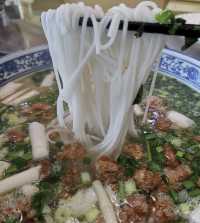Driving back to Kunming from Laos via Jianshui, Baoxinglou is a century-old restaurant that you must visit. Yunnan cuisine is indeed very classic. The three-strand spring bamboo shoots are very tender and smooth. Jelly is also one of the must-order dishes. Of course, there is also the signature dish, steamed chicken. The soup is as fresh and fragrant as ever. The three of us ordered three dishes and a bowl of rice noodles, which is definitely not enough.
BAO XING LOU Review
4.2 /517 Reviews
Recommended Attractions at Popular Destinations
Bangkok attraction near me | Manila attraction near me | Tokyo attraction near me | Taipei attraction near me | Hong Kong attraction near me | Seoul attraction near me | Kuala Lumpur attraction near me | Los Angeles attraction near me | Shanghai attraction near me | New York attraction near me | Shenzhen attraction near me | Osaka attraction near me | Singapore attraction near me | London attraction near me | Guangzhou attraction near me | San Francisco attraction near me | Beijing attraction near me | Macau attraction near me | Bali attraction near me | Jakarta attraction near me | Paris attraction near me | Ho Chi Minh City attraction near me | Istanbul attraction near me | Phuket attraction near me | Chicago attraction near me | Seattle attraction near me | Toronto attraction near me | Orlando attraction near me | Cebu attraction near me | Chiang Mai attraction near me
Popular Travelogues
Bangkok Travelogue | Tokyo Travelogue | Hong Kong Travelogue | Seoul Travelogue | Kuala Lumpur Travelogue | Los Angeles Travelogue | Shanghai Travelogue | New York Travelogue | Shenzhen Travelogue | Osaka Travelogue | Singapore Travelogue | London Travelogue | Guangzhou Travelogue | Beijing Travelogue | Macau Travelogue | Paris Travelogue | Phuket Travelogue | Chicago Travelogue | Orlando Travelogue
Popular Ranked Lists
Top 3 Premium Hotels in Vila Real District | Top 10 Local Restaurants in Dhaka | Top 19 Local Restaurants in Beihai | Top 10 Local Restaurants in Kamakura | Popular Local Restaurants in Zhongshan | Popular Premium Hotels in Naypyidaw Union Territory | Top 10 Best Things to Do in Hechi | Popular Premium Hotels in Beni Mellal-Khenifra | Top 4 Best Things to Do in Bazhong | Top 3 Best Things to Do in Linxia Prefecture | Top 15 Local Restaurants in Tai'an | Popular Best Things to Do in Shaoyang | Popular Premium Hotels in Shida Kartli | Top 3 Premium Hotels in Samtskhe-Javakheti | Top 3 Best Things to Do in Zhoukou | Top 5 Best Things to Do in Tongliao | Top 8 Local Restaurants in Izmir | Top 3 Premium Hotels in Jersey | Popular Best Things to Do in Baiyin | Popular Premium Hotels in Srem District | Top 3 Best Things to Do in Jishou | Top 3 Premium Hotels in Nakuru | Top 10 Local Restaurants in Cancun | Top 19 Local Restaurants in Haikou | Top 16 Local Restaurants in Ningde | Popular Best Things to Do in Ninghai | Top 4 Best Things to Do in Huanggang | Top 10 Local Restaurants in Orlando | Top 10 Local Restaurants in Quito | Top 5 Best Things to Do in Fangchenggang
Payment Methods
Our Partners
Copyright © 2025 Trip.com Travel Singapore Pte. Ltd. All rights reserved
Site Operator: Trip.com Travel Singapore Pte. Ltd.
Site Operator: Trip.com Travel Singapore Pte. Ltd.












